Gaspar van Wittel, known in Italy as Gaspare Vanvitelli, stands as a pivotal figure bridging the artistic traditions of the Netherlands and Italy during the late Baroque and early Rococo periods. Born in the Netherlands, he spent the vast majority of his highly successful career in Italy, becoming a foundational master of the veduta, or view painting. His meticulous, topographically accurate depictions of Italian cities, particularly Rome and Naples, not only captured the imagination of his contemporaries but also laid the groundwork for subsequent generations of celebrated view painters. His unique blend of Northern European precision with Italian light and landscape established a genre that became immensely popular, especially among Grand Tour travelers eager to acquire visual records of their journeys.
Early Life and Artistic Formation in the Netherlands
Gaspar van Wittel was born into a Roman Catholic family in Amersfoort, a city in the province of Utrecht in the Dutch Republic, around 1652 or 1653. His father was documented as being a carpenter, suggesting a background in skilled craftsmanship, though not directly in the fine arts. The young Van Wittel received his initial artistic training in his hometown. Records suggest he first studied for about four or five years with Thomas Jansz van Veenendaal, a local painter of modest reputation.
His more significant formative training, however, came under the tutelage of Matthias Withoos, a more established artist known for his detailed landscapes, still lifes, and townscapes, often imbued with a sense of quietude or even melancholy. This apprenticeship, likely lasting around seven years, would have instilled in Van Wittel a strong foundation in the Dutch tradition of detailed observation, careful rendering of textures, and an appreciation for the effects of light. Withoos himself had spent time in Italy, which may have planted the seed for Van Wittel's own eventual journey south.
The Journey to Rome and Integration into the Artistic Community
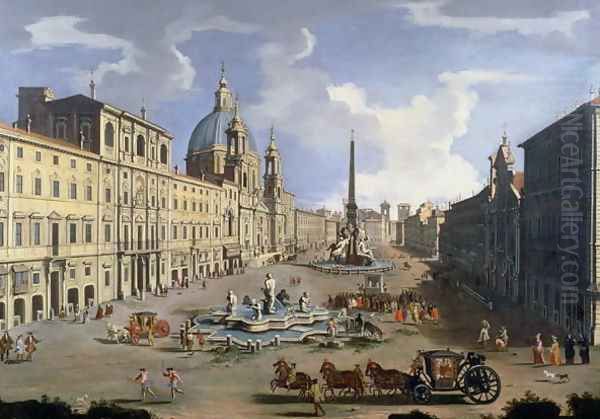
Around 1674 or 1675, seeking broader opportunities and exposure to the classical and Renaissance heritage that drew so many Northern artists, Van Wittel made the pivotal decision to move to Italy. He settled in Rome, the vibrant artistic capital of Europe. Like many of his compatriots, he was drawn to the city's ancient ruins, Baroque splendor, and the bustling community of international artists.
Soon after his arrival, Van Wittel joined the "Bentvueghels" (Dutch for "Birds of a Feather"), an association of mostly Dutch and Flemish artists working in Rome. This society provided a crucial social and professional network for expatriate artists, known for its convivial, sometimes boisterous gatherings and its practice of giving members outlandish nicknames. Van Wittel received the moniker "Piktoors" (Pitch-torch) within this group, although later in his career, he would become more widely known by another nickname. His teacher, Matthias Withoos, was also associated with the Bentvueghels.
Early Roman Career and Collaboration
In his early years in Rome, Van Wittel initially worked primarily as a draughtsman. A significant early project involved a collaboration with the Dutch hydraulic engineer Cornelis Meyer. Meyer was engaged by the Papal authorities to study the navigability of the River Tiber and propose improvements. Van Wittel was commissioned to create a series of detailed topographical drawings illustrating Meyer's survey and plans, documenting the river's course through Rome and its surrounding countryside.
This project proved highly influential for Van Wittel's development. It honed his skills in precise topographical representation and likely encouraged his use of optical aids, such as the camera obscura, to achieve high levels of accuracy in perspective and detail. These drawings, some of which survive, demonstrate his nascent ability to combine technical precision with an aesthetically pleasing composition, foreshadowing his future success as a painter of views.
The Emergence of the Veduta Painter
While topographical prints and drawings existed before Van Wittel, he played a crucial role in elevating the painted veduta—an accurate, often panoramic view of a city or landscape—into a distinct and highly respected genre in Italian art. Moving beyond the idealized classical landscapes of artists like Claude Lorrain or the architectural capricci (fantasies) of painters like Viviano Codazzi, Van Wittel focused on capturing the recognizable reality of specific locations.
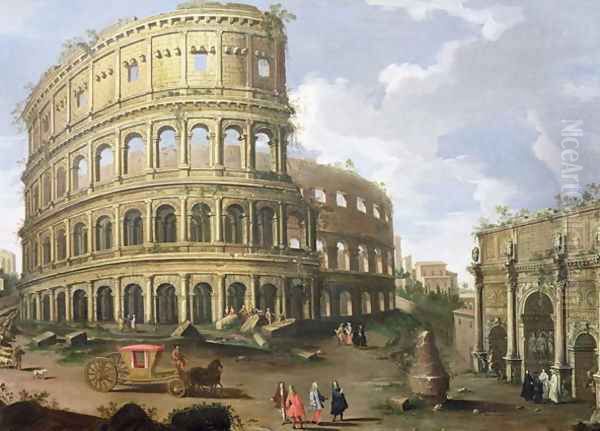
He began producing painted views, initially based on his drawings for Meyer and then expanding his repertoire to encompass the famous landmarks and picturesque corners of Rome. His approach was characterized by a clarity derived from his Dutch training, meticulous attention to architectural detail, and a sophisticated understanding of linear perspective, often employing a slightly elevated viewpoint to provide a comprehensive overview of the scene. He rendered buildings, water, and foliage with painstaking care, populating his scenes with small figures that added life and scale.
Artistic Style and Innovative Techniques
Van Wittel's style is defined by its remarkable realism and topographical precision. He aimed to create faithful portraits of cities, capturing their unique character and atmosphere. His compositions are typically well-structured, often using architectural elements like rows of buildings or foreground trees to create a sense of depth and frame the view. The Dutch influence is evident in his crisp rendering of detail and his sensitivity to light, although his palette often adapted to the brighter, warmer tones of the Italian climate.
A key aspect of his working method, and a source of some contemporary comment, was his probable use of the camera obscura. This optical device, which projects an image of the external scene onto a surface within a darkened box or room, would have greatly aided Van Wittel in accurately tracing the outlines of buildings and establishing correct perspective lines for his complex cityscapes. While not the inventor of the device, he was among the first painters to systematically employ it for creating finished vedute, a practice later adopted by Venetian view painters like Canaletto. This technical aid contributed significantly to the convincing illusionism of his work.
Another distinguishing feature, particularly in his later career, led to his most famous nickname: "Gasparo dagli Occhiali" (Gaspare with the Glasses). His reliance on spectacles, presumably due to declining eyesight or simply for close work, became a defining personal characteristic noted by contemporaries.
Masterpieces and Celebrated Subjects: Rome
Rome, his adopted home for most of his life, provided Van Wittel with an inexhaustible source of subjects. He painted numerous views of the city's most iconic sites, often returning to the same location multiple times, varying the viewpoint or time of day. Among his most celebrated Roman views are:
View of St. Peter's Basilica and the Vatican: He depicted the basilica and its piazza from various angles, capturing the grandeur of Bernini's colonnades and the imposing dome of Michelangelo. These views often emphasize the vastness of the space and the interplay of architecture and open sky.
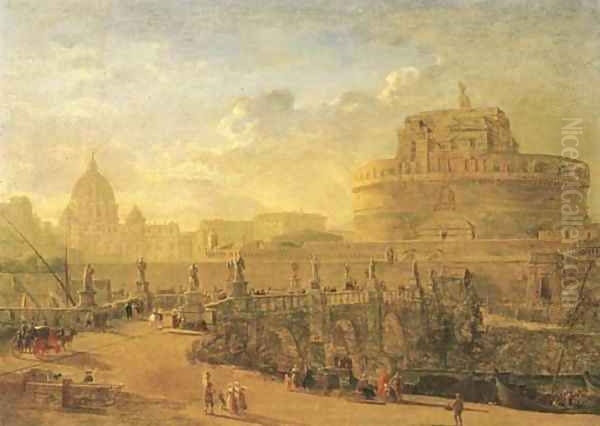
Piazza Navona: Van Wittel produced several stunning depictions of this famous Baroque square, detailing Bernini's Fountain of Four Rivers and Borromini's facade of Sant'Agnese in Agone, capturing the lively atmosphere of the piazza.
The Colosseum: His views of the ancient amphitheater highlight its monumental scale and picturesque decay, often set within a broader landscape context.
Castel Sant'Angelo and the Tiber: The cylindrical fortress and the adjacent bridge, Ponte Sant'Angelo, with its Bernini sculptures, were frequent subjects, allowing him to explore reflections in the water and the relationship between architecture and the river.
Piazza del Popolo: He painted this northern entrance gate to the city, often including the twin churches and the Egyptian obelisk, showcasing his ability to handle complex urban spaces.
Views of the Tiber River: Drawing on his early work with Meyer, he continued to paint scenes along the Tiber, depicting its banks, bridges like the Ponte Sisto, and riverside structures like the Ospizio di San Michele.
These Roman works are characterized by their clarity, detailed execution, and often serene atmosphere, presenting the city as both a collection of magnificent monuments and a living urban environment.
Travels and Views Beyond Rome: Naples and Venice
While based primarily in Rome, Van Wittel undertook several important journeys to other parts of Italy, resulting in significant bodies of work depicting other cities. Between 1699 and 1702, he spent considerable time in Naples, likely under the patronage of Don Luis de la Cerda, the Spanish Viceroy. His Neapolitan views are among his most accomplished works, capturing the city's dramatic setting between Mount Vesuvius and the bay.
Notable Neapolitan subjects include:
View of Naples with Largo di Palazzo (now Piazza del Plebiscito): Depicting the Royal Palace and the bustling square.
Views of the Darsena (the old harbour): Showcasing maritime activity against the backdrop of the city and Castel Nuovo.
The Grotto of Pozzuoli, with Virgil's Tomb: A particularly atmospheric work depicting the ancient Roman tunnel near Naples, combining landscape, classical ruins, and local figures. This painting highlights his skill in rendering natural scenery alongside man-made structures.
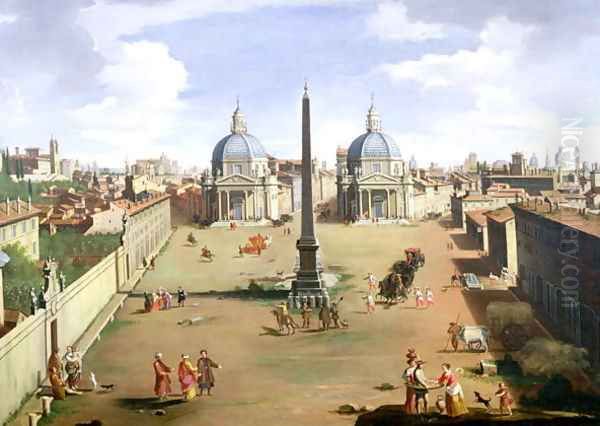
Van Wittel also traveled to Northern Italy, visiting cities like Florence, Bologna, Verona, and notably Venice. His Venetian views, though perhaps less numerous than his Roman or Neapolitan ones, are highly prized. He painted scenes of the Grand Canal, the Bacino di San Marco, and the island of San Giorgio Maggiore, capturing the unique interplay of water, light, and architecture in the lagoon city. These works predate the flourishing of the Venetian school of veduta painting led by artists like Luca Carlevaris and Canaletto, suggesting Van Wittel's potential influence even there.
Influence and Legacy in Italian Art
Gaspar van Wittel's impact on the course of Italian painting, particularly landscape and cityscape, was profound. He is widely considered one of the fathers of the Italian veduta genre as it developed in the 18th century. His emphasis on topographical accuracy, combined with artistic sensibility, set a standard that strongly influenced the next generation of view painters.
His most significant followers were the Venetian masters:
Luca Carlevaris: Often considered the founder of the 18th-century Venetian school of vedutisti, Carlevaris likely knew Van Wittel's work, which provided a model for detailed urban views.
Giovanni Antonio Canal, known as Canaletto: The most famous veduta painter, Canaletto undoubtedly learned from Van Wittel's approach to perspective, detail, and the use of the camera obscura, although Canaletto developed his own distinctive, often more luminous and atmospheric style.
Bernardo Bellotto: Canaletto's nephew and pupil, Bellotto adopted a similar highly detailed style, often with cooler light, working extensively in Italy, Dresden, Vienna, and Warsaw.
In Rome, Van Wittel's influence can be seen in the work of:
Giovanni Paolo Pannini: While Pannini often specialized in capricci featuring Roman ruins, his topographical views of contemporary Rome owe a debt to Van Wittel's precedent.
Hendrik Frans van Lint: A Flemish painter active in Rome (nicknamed "Studio"), Van Lint worked in a style very close to Van Wittel's, producing detailed views of Rome and its surroundings. Some collaboration between the two artists has been suggested.
Van Wittel's success demonstrated the commercial viability of high-quality view painting, catering to the growing demand from aristocrats, church officials, and affluent tourists on the Grand Tour who desired sophisticated souvenirs of their travels. He effectively created a market that his successors would exploit even further. He served as a crucial link, transmitting the Northern tradition of meticulous realism into the heart of Italian art.
Contemporaries and the Roman Artistic Milieu
Van Wittel operated within a rich artistic environment in Rome, interacting with numerous Italian and Northern European artists. Besides his teacher Matthias Withoos and potential collaborator Hendrik Frans van Lint, other relevant figures include:
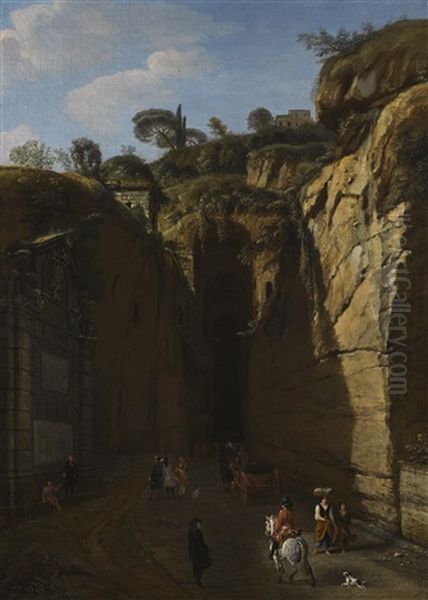
Viviano Codazzi: An earlier specialist in architectural paintings (quadratura) and ruins, whose work provided some background for the interest in architectural representation.
Johann Wilhelm Baur: A German artist known for topographical drawings and prints of Rome slightly earlier than Van Wittel.
Lievin Cruyl: A Flemish priest and draughtsman who produced highly detailed panoramic drawings of Rome in the 1660s, which may have influenced Van Wittel.
Jan Frans van Bloemen, known as Orizzonte: A Flemish landscape painter active in Rome, specializing in idealized landscapes of the Roman Campagna. Attribution issues sometimes arise between his work and Van Wittel's, particularly in landscape elements.
Abraham Genoels: Another Flemish landscape painter and Bentvueghel member active in Rome.
Jacob de Heusch: A Dutch painter known for Italianate landscapes, also active in Rome.
While influenced by the general tradition of landscape painting established by earlier masters resident in Rome like Claude Lorrain and Nicolas Poussin, Van Wittel's focus on specific, recognizable topography marked a distinct shift. His patrons included prominent Roman families like the Colonna, Albani, and Ottoboni, as well as visiting dignitaries like the aforementioned Viceroy of Naples.
Later Life, Anecdotes, and Controversies
Gaspar van Wittel enjoyed a long and prosperous career, remaining active well into his seventies. He married Anna Lorenzani in Rome in 1697 and had several children, including Luigi Vanvitelli (1700-1773), who became one of Italy's most important architects of the 18th century, famous for designing the Royal Palace of Caserta near Naples.
As mentioned, his nickname "Gasparo dagli Occhiali" became widely used, reflecting a personal trait that distinguished him. His eyesight eventually deteriorated significantly, forcing him to cease painting around 1730, though he lived for another six years.
Some minor controversies or points of interest surround his life. The attribution of certain works remains debated, a common issue for successful artists whose styles are imitated. Additionally, some obscure historical accounts tentatively suggest a brief, early involvement in activities related to firearms manufacturing before his artistic career fully took off, though this remains speculative and somewhat incongruous with his known life path.
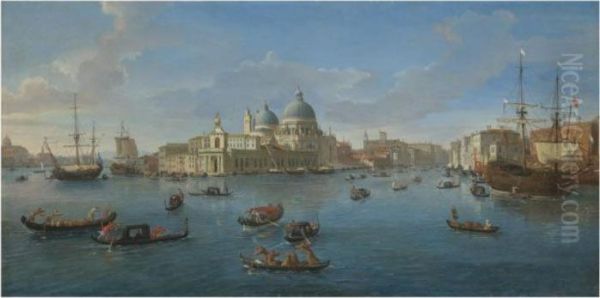
He died in Rome on September 13, 1736, and was buried in the church of Santa Maria in Vallicella (Chiesa Nuova). He left behind a substantial body of work and a legacy that cemented the veduta as a major genre in European art.
Collections and Where to See His Work Today
Gaspar van Wittel's paintings and drawings are held in numerous prestigious museums and private collections across Europe and North America. His works offer invaluable visual records of Italian cities in the late 17th and early 18th centuries. Major holdings can be found in:
Italy:
Rome: Capitoline Museums, Galleria Colonna, Galleria Doria Pamphilj, Palazzo Barberini (Galleria Nazionale d'Arte Antica), Biblioteca Nazionale Centrale Vittorio Emanuele II (especially drawings).
Naples: Museo di Capodimonte, Galleria d'Italia - Palazzo Zevallos Stigliano.
Florence: Uffizi Gallery, Palazzo Pitti.
Other Italian collections in cities like Bologna and Turin also hold examples.
Spain:
Madrid: Prado Museum holds several important works, including views of Venice and Naples.
United Kingdom:
Various public and private collections, including the Royal Collection.
United States:
Washington D.C.: National Gallery of Art.
Los Angeles: J. Paul Getty Museum.
Other museums in cities like Boston, Cleveland, and New York.
Other European Countries: Significant works can be found in museums in France (Louvre, Paris), Germany, Austria, and the Netherlands.
These collections showcase the breadth of his work, from large-scale panoramic cityscapes to smaller, more intimate views and detailed preparatory drawings.
Conclusion: A Lasting Vision
Gaspar van Wittel, or Gaspare Vanvitelli, occupies a unique and important position in the history of European art. As a Dutchman who became a master of depicting Italian scenery, he synthesized the precision and observational skills of his native tradition with the light, atmosphere, and celebrated subjects of his adopted homeland. He was instrumental in establishing the topographical veduta as a major artistic genre, pioneering techniques and compositional approaches that would profoundly influence Canaletto, Bellotto, Pannini, and others. His meticulously detailed and beautifully composed views remain not only valuable historical documents but also captivating works of art that continue to enchant viewers with their clarity and serene beauty, offering a timeless window onto the Italy of the Baroque era.